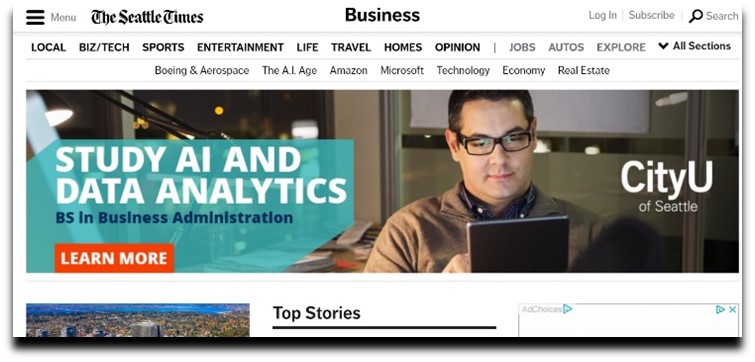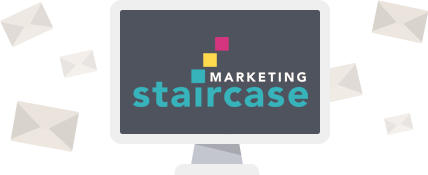The world of online ads has grown exponentially during the past few years and Google ads are one of the most highly used tools out there. Unfortunately, many small business owners and nonprofit organizations find Google ads confusing and aren’t sure how to best use them for their marketing.
In this blog post, I’ll review three different ad types and how to fit them into your marketing funnel.
How Do Google Ads Fit Into Your Marketing Funnel?
Before we dive in, let’s review the marketing funnel, shown below. Why the marketing funnel? Because the traditional marketing funnel outlines the journey that your average customer experiences. It’s a great way to illustrate how and when ads can support your marketing goals.
Beginning of the Funnel: Awareness & Engagement
In the early stages of the marketing funnel, customers become aware of your product or service. They also engage with you by signing up for a newsletter, going to your website, following you on social media, or similar action.
Middle of the Funnel: Discovery
In this stage, your customers more seriously consider and research your offer to see if it fits their wants and needs. They may revisit your website, read customer reviews, compare you to the competition, or reach out to you with a phone call or social media messaging.
End of the Funnel: Purchase & Retention
At the end of the funnel, your customers purchase your product or service. In the retention stage, they will become a repeat customer and may encourage others to discover you.
So how do these stages relate to Google ads?

Display Ads Support Your Marketing at the Beginning of the Funnel
Display ads are a type of ad shown to prospective customers based on their behavior, interests, or demographics. They are usually visual rather than text ads.
The example below was displayed when I visited the Seattle Times website. It was shown to me because I am interested in business and I live in Seattle.

These display ads are targeted to potential customers based on specific demographics or interests, not on what they searched for in Google.
Display ads are good for businesses who want to increase awareness and to help people learn about the product and consider if it is for them. They also spur engagement because you can click through the ad and learn more about the product.
Often you can set up very specific targeting for these ads, such as demographic data, interest data, and other settings. Google’s Display ads show up on their website or on partner sites that have agreed to show their ads.
Search Ads Move Your Audience Through the Middle of the Funnel
The next ad type we’ll talk about is search ads. These are shown when you type something into Google and YouTube. These are also called text ads and were previously known as Google Adwords.
These ads are ideal for reaching people who are researching a particular topic, performing a search to solve a problem, or looking to buy something. They are ideal for people in the middle stages of the marketing funnel who are considering your product. Again, people who see these ads have an opportunity to click through to learn more about your product.
Below is an example of a search ad I was shown when I typed “marketing conference” into Google last spring.

To set up these ads, you tell Google which keywords you would like to target. Your ad is triggered when someone types in the keywords. Google uses an elaborate auction system to determine which ads are shown for particular keywords.
Remarketing Ads are Powerful at the End of the Funnel
Remarketing ads are shown to people who have previously engaged with the business in some way, such as visiting the website or engaging with a past ad. They can take different formats: text, display, or video.
People who see these ads will be familiar with your business. Marketers often call this marketing to a “warm” audience because those who see the ads are already warmed up to you and more likely to take action.
One powerful way to use remarketing ads is to include a strong call to action to tell your audience to take the next step and learn more or try your product at the end of the marketing funnel.
The ad below is an example of a display remarketing ad. As a member of the Social Media Marketing World team, I visited their website often. In this case, I probably was shown these ads because I’ve visited the website. The ad was shown to me while I was on a business-related website which was probably a Google Partner.

I hope this article has been helpful to understand the power of Google ads and gives you some ideas for how you can use them in marketing your business. Stay tuned as I cover more about Google and YouTube ads in the upcoming months.
And if you need any training or assistance setting up ads for your business, drop me a line and let me know how I can help!


